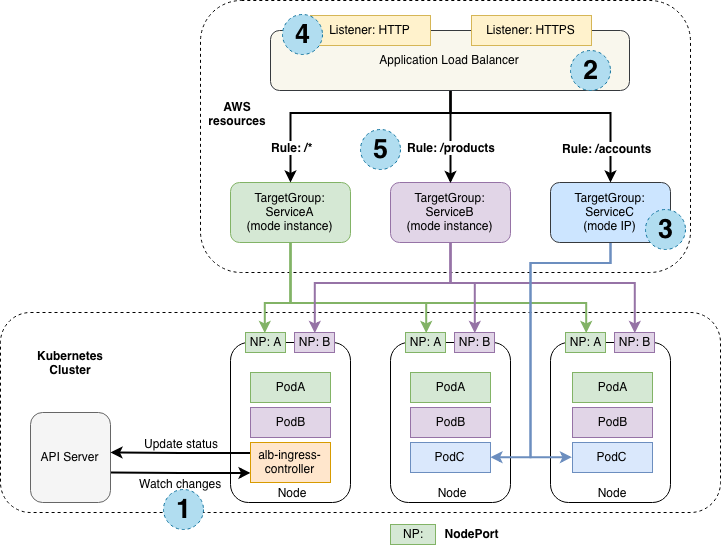Ingress
 Sanmarg Paranjpe
Sanmarg Paranjpe
Imagine your Kubernetes cluster as a bustling city. Each service within it is like a different neighborhood, each with its own unique function. But how do people (or rather, network requests) find their way to the right neighborhood? That's where Ingress comes in.
What is Ingress?
Ingress is like a traffic cop, directing incoming traffic to the right destination. It's a Kubernetes resource that exposes HTTP and HTTPS services outside the cluster. Think of it as a bridge between the internet and your internal services.

How Does Ingress Work?
Define Rules: You create Ingress resources to specify how traffic should be routed. For instance, you might define a rule that says, "If a request comes in for
/products, send it to the 'product-service' service."Set Up an Ingress Controller: An Ingress controller is a piece of software that interprets these rules and directs traffic accordingly. Popular Ingress controllers include Nginx Ingress Controller and Traefik.
Secure Your Services: You can use Ingress to secure your services with TLS/SSL certificates. This ensures that communication between the client and your service is encrypted.
Real-World Example: Exposing a Web Application
Imagine you have a web application running inside a Kubernetes cluster. You want to make it accessible to the public internet. Here's how you can use Ingress:
1. Create an Ingress Resource:
apiVersion: networking.k8s.io/v1
kind: Ingress
metadata:
name: my-app-ingress
annotations:
nginx.ingress.kubernetes.io/rewrite-target: /$1
spec:
rules:
- host: san.com
http:
paths:
- path: /
pathType: Prefix
backend:
service:
name: my-web-app
port:
number: 8080
2. Configure a Domain Name: Set up a DNS record for san.com to point to your Kubernetes cluster's IP address.
3. Add TLS Certificate:
apiVersion: networking.k8s.io/v1
kind: Ingress
metadata:
name: my-app-ingress
annotations:
nginx.ingress.kubernetes.io/rewrite-target: /$1
spec:
tls:
- hosts:
- san.com
secretName: my-app-cert
rules:
- host: san.com
http:
paths:
- path: /
pathType: Prefix
backend:
service:
name: my-web-app
port:
number: 8080
Now, when users visit san.com, their requests will be routed to your web application within the cluster.
Key Benefits of Using Ingress:
Simplified Service Exposure: Easily expose services to the outside world.
Centralized Traffic Management: Manage traffic routing and load balancing in one place.
Enhanced Security: Secure your services with TLS/SSL and other security measures.
Scalability: Handle increasing traffic loads with ease.
By understanding Ingress and leveraging its power, we can effectively expose your Kubernetes services to the world while maintaining security and control.
Subscribe to my newsletter
Read articles from Sanmarg Paranjpe directly inside your inbox. Subscribe to the newsletter, and don't miss out.
Written by
